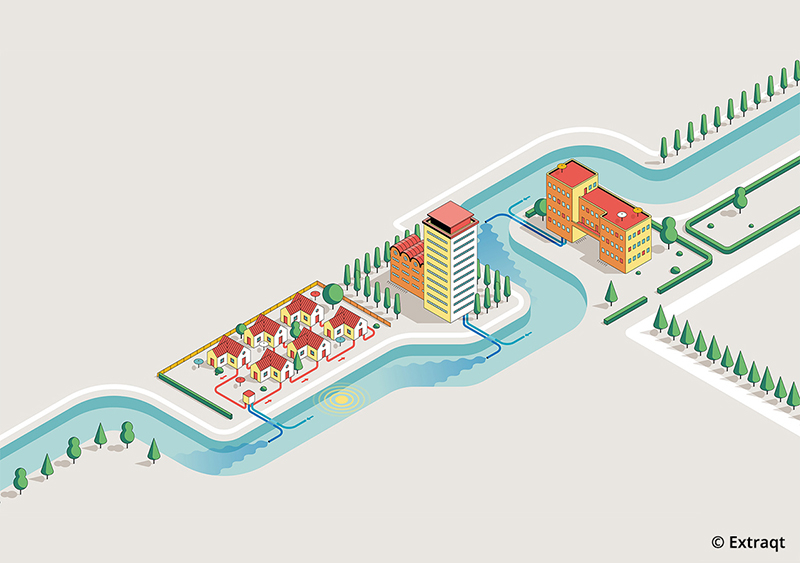Aquathermal energy:
Heating and cooling with water
 Aquathermal energy is a sustainable process of heating and cooling using water. It involves the extraction of heat and cold from surface water and can play a major role in the energy transition. Research in the Netherlands carried out by CE Delft and Deltares shows that aquathermal energy, such as aquathermal energy from surface water, can supply more than 40% of the heat demand of buildings in the Netherlands. This sustainable alternative heats and cools buildings and can contribute significantly to the gas-free objective of the Netherlands. In addition to surface water, heat recovery from wastewater and drinking water is also possible, which can further contribute to the diversification of energy sources. In the AquaCOM project we focus on aquathermal energy from surface water.
Aquathermal energy is a sustainable process of heating and cooling using water. It involves the extraction of heat and cold from surface water and can play a major role in the energy transition. Research in the Netherlands carried out by CE Delft and Deltares shows that aquathermal energy, such as aquathermal energy from surface water, can supply more than 40% of the heat demand of buildings in the Netherlands. This sustainable alternative heats and cools buildings and can contribute significantly to the gas-free objective of the Netherlands. In addition to surface water, heat recovery from wastewater and drinking water is also possible, which can further contribute to the diversification of energy sources. In the AquaCOM project we focus on aquathermal energy from surface water.
Surface water in NorthWest Europe has a temperature generally varying between 5 and 25°C over the year making it a very low temperature heat source. A heat pump driven by green electricity combined with a heat exchanger can utilise the surface water to supply sustainable heating to a district heat network and consumers. A collective heat pump can be used to increase the temperature to a suitable level for space heating and hot water, or, alternatively, an individual heat pump can be used at each building.